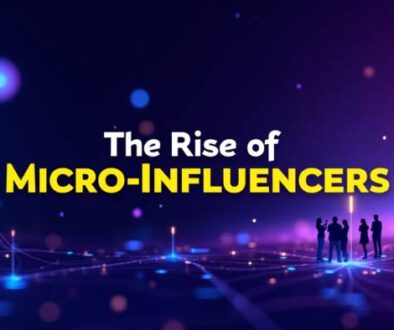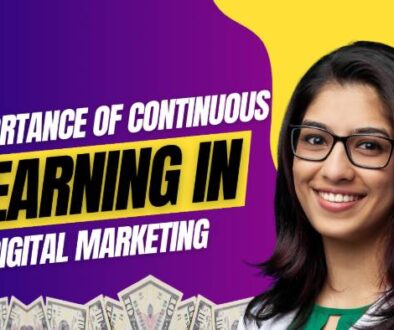How to Build a Data-Driven Marketing Plan?
How to Build a Data-Driven Marketing Plan: A Step-by-Step Guide
Are you new to digital marketing and curious about how to build a marketing plan that actually works? Don’t worry—this guide is designed just for you! You don’t need to be a tech expert or a marketing guru to understand and apply these steps. A data-driven marketing plan simply means making decisions based on numbers and facts rather than relying on guesswork.
In this blog, I’ll break it down into simple steps. By the end, you’ll know how to create a marketing plan that gets results. If you’re in Pune and looking to dive deeper into this field, enrolling in Digital Marketing classes in Pune, or joining a Digital Marketing Training Institute in Pune, can be a game-changer for you.
Step 1: Understand Your Goals
The first step in any marketing plan is knowing your goals. Ask yourself:
- Do I want more visitors to my website?
- Am I trying to generate leads?
- Is my goal to boost sales?
- Do I want more people to know about my brand?
Let’s take an example. If you own a bakery in Pune, your goal might be to get 100 new customers to order cakes every month. Having specific and measurable goals helps you focus and track your progress. If you’re unsure how to set these goals, a Digital Marketing Training Institute in Pune can help you get started.
Step 2: Know Your Audience
Who are you trying to reach? This is one of the most important questions to ask yourself. A good understanding of your audience will help you create content and strategies that resonate with them. Here’s what you should know:
- Demographics: Age, gender, location, and income level of your audience.
- Interests: What are they passionate about? What problems do they want to solve?
- Behavior: Where do they hang out online? Do they use Instagram, Facebook, or LinkedIn?
For instance, if you’re targeting students for your Digital Marketing classes in Pune, you might focus on platforms like Instagram or YouTube, where younger audiences spend time. Tools like Google Analytics or social media insights can help you gather this information.
Step 3: Collect the Right Data
Data is the backbone of your marketing plan. It helps you understand what’s working and what’s not. Here are the types of data you should focus on:
- Website Analytics: Use tools like Google Analytics to track how many people visit your site, where they come from, and what they do there.
- Social Media Metrics: Platforms like Facebook, Instagram, and LinkedIn offer insights into likes, shares, comments, and overall engagement.
- Email Campaign Data: If you send emails, keep an eye on metrics like open rates and click-through rates.
- Sales Data: Track how many leads turn into paying customers, what products they buy, and how much they spend.
If this feels overwhelming, don’t worry! The best Digital Marketing course in Pune will teach you how to use these tools step by step.
Step 4: Analyze Your Data
Once you have data, the next step is to analyze it. Look for patterns that can help you make informed decisions. For example:
- Which marketing channel (social media, email, website) is driving the most traffic?
- What kind of posts are getting the most engagement on social media?
- What time of day are people most likely to open your emails?
Let’s say you’re running ads on both Facebook and Google, and you notice that Facebook ads are driving more traffic at a lower cost. This tells you where to focus your budget.
If you’re unsure how to analyze data, attending Digital Marketing classes in Pune can teach you the basics and make it easy to understand.
Step 5: Create a Strategy
Now that you know your goals, audience, and data insights, it’s time to create a strategy. Here’s what your strategy should include:
- Target Audience: Who you’re speaking to (e.g., students, business owners, or homemakers).
- Marketing Channels: Where you’ll focus your efforts (e.g., Facebook, Instagram, or email marketing).
- Content Plan: The type of content you’ll create, such as blogs, videos, or infographics.
- Budget: Decide how much you’ll spend and allocate it to different channels.
For instance, if you’re promoting the best Digital Marketing courses in Pune, your strategy might include creating Instagram ads, writing blog posts, and sending email newsletters to your audience.
Step 6: Test and Optimize
Marketing is not a “set it and forget it” process. It’s important to test and refine your strategies regularly. Here’s how:
- A/B Testing: Test two versions of an ad or email to see which performs better.
- Experiment with New Platforms: If your audience is active on TikTok, give it a try!
- Adjust Your Budget: Focus more on the channels that deliver the best results.
For example, if you’re running ads for your Digital Marketing Training Institute in Pune and notice that Instagram is bringing in more leads than Facebook, consider reallocating your budget.
Step 7: Track Your Results
The final step is to measure your progress. This ensures you’re moving closer to your goals. Use tools like:
- Google Analytics for website traffic and conversions.
- Facebook Insights or Instagram Analytics for social media performance.
- Email Marketing Software for campaign metrics.
Set up a schedule to review your data weekly or monthly. Tracking your results will help you see what’s working and where you need to improve.
Why Data-Driven Marketing is Important
You might wonder, why go through all this effort? Here’s why a data-driven approach matters:
- Better Decision-Making: Data helps you focus on strategies that work.
- Cost Efficiency: Spend your budget wisely on channels that deliver results.
- Improved Customer Experience: Understanding your audience ensures your marketing feels relevant and personalized.
Whether you’re running a local business or promoting an online course, a data-driven plan gives you a competitive edge.
Also Read – Understand Digital Marketing Ecosystem
Conclusion
Creating a data-driven marketing plan might feel overwhelming at first, but it’s all about taking small steps and learning as you go. If you’re serious about mastering digital marketing, consider enrolling in Digital Marketing classes in Pune or signing up for the best Digital Marketing course in Pune. These programs can give you hands-on experience with tools and strategies, making it easier to succeed in this field.
Remember, every expert was once a beginner. Start small, stay consistent, and soon you’ll be creating marketing plans like a pro!




